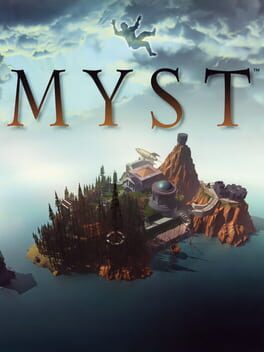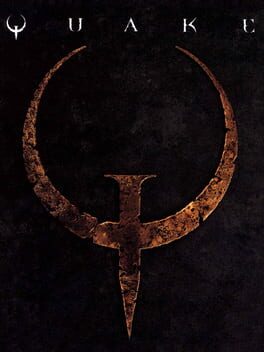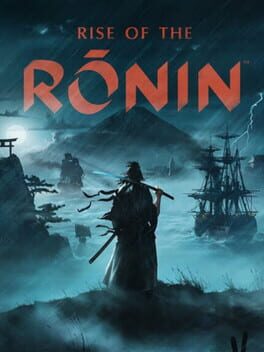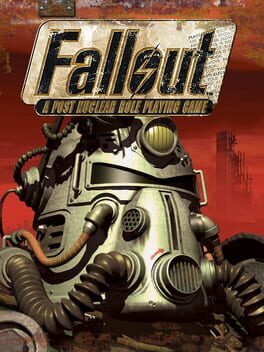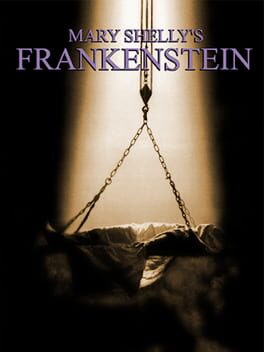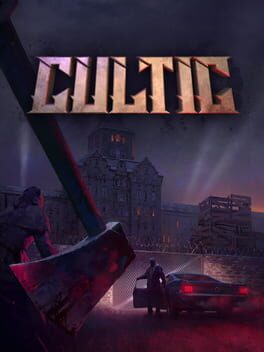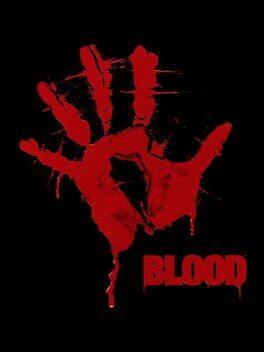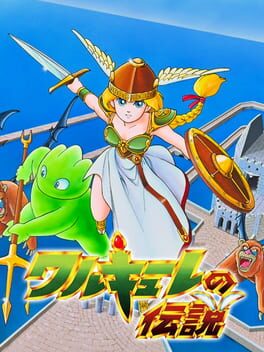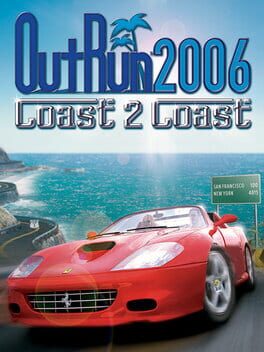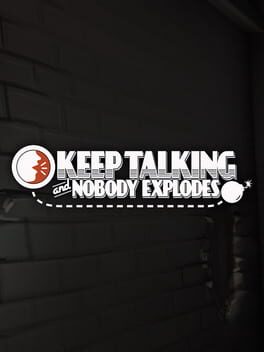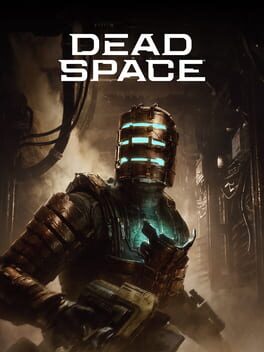DJSCheddar
1487 Reviews liked by DJSCheddar
PowerWash Simulator
2021
Very much enjoyed my time with this. Extremely relaxing and satisfying. Knows it's job and gets it done. However, I'm only giving stars for every player that is allowed to play campaign mode with you (including yourself) because it is absolutely fucking stupid that you can only play it with one other friend (at least make another campaign mode that you can progress through with more people) and I SHOULD be giving this ONE STAR for the even more STUPID fact that only the host can earn trophies and enhanced equipment (more or less) in campaign mode while the person helping their campaign along doesn't get ANYTHING (more or less). Along with other little tedious issues here that also shouldn't at all be a problem, this game is an excellent example of how all the stupid little things can add up and taint a pretty solid product. Absolutely no regrets with my time spent beating the campaign with my friend (while the game forced us to leave our others friends behind to DIE) and some solo stuff I did but also COME ON.
Myst
1993
Behold, my 1500th video game! This special occasion warrants nothing less than a super special review. So, what did I think? Well first, some backstory.
This past year or 2, I've been obsessed with playing games that are considered foundational. Sometimes, I don't enjoy them but I'm still glad I played them for the historical value alone which has been the case for games such as Colossal Cave Adventure, Mystery House, or Portopia. Other times, I find some of my unexpected favourite games that are actually very fun such as Wizardry, Fantasy Zone, or... oh yeah, another game by Myst's developers called The Manhole!
When I played The Manhole and its 3D remake last year, I was very captivated! These are 2 games where there is no real objective but to take in the scenery. Just explore and find hilarious imagery while listening to wacky characters. No win condition, no lose condition, no timer, no stress. In a way, this is a really avant garde method of showing that video games are more than their title suggests. That being, they aren't just "games" played for the sake of winning but perhaps important pieces of art.
With how hyped up Myst has been over the years, I decided I would make it my 1500th game on Backloggd (Jesus I've been on this site for years) knowing that it would be something special and, well....
Look. I immensely respect what Myst is going for. I really love how inspired it is, and I am sure the pre-rendered graphics were mindblowing to 1993 audiences. It's neat how several of my beloved games such as Drowned God were blatantly inspired by it, and it's arguably the most important game in the last 30 or so years due to how it was the big boom for PC gaming the world needed.
Yet, I can't feel passionately about it the way I can with The Manhole or Wizardry or even the likes of Colossal Cave Adventure. It is hard for me to be captivated by Myst's legacy when many point and click/adventure games predate it and, in my opinion, have far better QOL, gameplay, and storytelling.
As far as point and click games from before 1993 go, I have a lot of favourites. Uninvited felt like a very kinetic and replayable game with a unique horror feel. Monkey Island 1-2 are still some of the most entertaining and hilarious games I've experienced, boasting incredible artstyles and early popularization of dynamic music. The Manhole, again, was one of the very first entertainment CD-roms and it's still rather fun. Alter Ego having barely any pictures and still being one of the most engaging, deeply written games I've experienced. Hell, when looking at niche Japanese games I'm impressed at how Cosmology of Kyoto, Otogirisou, or Ihatovo Monogatari managed to breathe new life into the game medium as a whole, displaying such artistry that even the likes of Roger Ebert were impressed.
All this is to say that I don't understand at all why Myst is often defended on the basis of "well it's a 30 year old game" especially when other point-and-clicks like Monkey Island before it are still popular today. Hell, Monkey Island is probably much more fun to revisit for the average player. Monkey Island doesn't receive memes like this, at least certainly not with any frequency https://pbs.twimg.com/media/E9tXrGBWYAYBtfc.png
When trying to wrap my head around what made Myst so popular beyond the graphics, I looked at the development history behind the game and found this https://youtu.be/EWX5B6cD4_4
Myst was meant to give players a bang for their buck, resulting in a design based around "brute force" real estate to explore. With no win or lose conditions, the player could feasibly spend weeks if not months on the game. And it doesn't stop there, there is what seems to be a deliberate lack of QOL.
I found myself constantly frustrated by Myst. The save feature restarts the player at the beginning of the area rather than saving their progress, contrary to other even older adventure games. Batteries near the dock drain rather fast and need to be constantly recharged. Activating the large tree elevator is an annoying process. The main character is too much of a moron to carry two pages at a time, so if the player wants to experience every FMV they are forced to go through the same area twice, some of which can be rather confusing to navigate. The sound puzzles where the player must match 5 different sound effects in a row with very large margin of error might as well just say "fuck the deaf and the tone deaf players" good lord. I personally felt the pace broken when 10 minutes into the game I was compelled to read 4 mini-novels in a row. And perhaps most importantly, I had trouble making out a single full sentence in the red and blue books due to the overloaded static noises in the cutscenes.
Are there things I appreciate about Myst? Sure! This is far from a game without merit. The minimalist presentation is rather beautiful, with the pre-rendered images and FMVs still holding their own against photorealistic graphics from far stronger hardware. The atmosphere can be rather immersive a lot of the time, with the sound effects being very convincing for every action in the game. I rec listening to this part of the Ars Technica documentary, since it explains things better than I could https://youtu.be/EWX5B6cD4_4?t=860
It's truly a technical engineering feat. Also, after the player obtains the true ending, they are allowed to just explore the island. It really gives me the impression their earlier work on The Manhole helped shape some decisions in this game, and that's just lovely.
Well, that's Myst. It's a technically impressive game, but far from a fun one in my opinion. It was only while writing this review that, perhaps, it hit me.
Everybody has their own unique perspective and experiences that shapes them into the EPIC GAMER they are today. I saved Myst for a rainy day, subconsciously putting it on a pedestal in my head. Most of the people who told me how much they loved Myst mentioned it being a formative artistic experience for them. Could it be because I had the liberty of playing so many untranslated JP adventure games, more modern adventure games, and so forth before Myst, its impact was lost on me?
1500 games is a lot of fucking games. There is an alternate universe out there where I was fascinated by Myst and fell in love with it, rather than found it frustrating in my mid 20s. In fact, this is what one of the developers theorized; only maybe half of players even left the first island. Yet, so many young players who discovered the game left with quite an impression, that they played something which resonated with them FOR the unfamiliar mystique, rather than despite it https://youtu.be/EWX5B6cD4_4?t=1070
When I started typing this review, I wasn't sure if I was happy I played Myst. Yet now, I feel confident I am happy it was my 1500th game. It was not a waste of time, but a good reminder of how games are more than what I play. They are artistic statements, impressive feats of software development, and parts of our culture. The cynic in me can say Myst is a subpar adventure game that only had any success due to the photorealistic graphics. Yet, I'm more inclined to ask one thing:
Is there any game which better embodies the culture of early PC gaming and the appeal of pre-rendered graphics?
God, I fucking love video games.
https://www.youtube.com/watch?v=e49OXXBX3Ko
This past year or 2, I've been obsessed with playing games that are considered foundational. Sometimes, I don't enjoy them but I'm still glad I played them for the historical value alone which has been the case for games such as Colossal Cave Adventure, Mystery House, or Portopia. Other times, I find some of my unexpected favourite games that are actually very fun such as Wizardry, Fantasy Zone, or... oh yeah, another game by Myst's developers called The Manhole!
When I played The Manhole and its 3D remake last year, I was very captivated! These are 2 games where there is no real objective but to take in the scenery. Just explore and find hilarious imagery while listening to wacky characters. No win condition, no lose condition, no timer, no stress. In a way, this is a really avant garde method of showing that video games are more than their title suggests. That being, they aren't just "games" played for the sake of winning but perhaps important pieces of art.
With how hyped up Myst has been over the years, I decided I would make it my 1500th game on Backloggd (Jesus I've been on this site for years) knowing that it would be something special and, well....
Look. I immensely respect what Myst is going for. I really love how inspired it is, and I am sure the pre-rendered graphics were mindblowing to 1993 audiences. It's neat how several of my beloved games such as Drowned God were blatantly inspired by it, and it's arguably the most important game in the last 30 or so years due to how it was the big boom for PC gaming the world needed.
Yet, I can't feel passionately about it the way I can with The Manhole or Wizardry or even the likes of Colossal Cave Adventure. It is hard for me to be captivated by Myst's legacy when many point and click/adventure games predate it and, in my opinion, have far better QOL, gameplay, and storytelling.
As far as point and click games from before 1993 go, I have a lot of favourites. Uninvited felt like a very kinetic and replayable game with a unique horror feel. Monkey Island 1-2 are still some of the most entertaining and hilarious games I've experienced, boasting incredible artstyles and early popularization of dynamic music. The Manhole, again, was one of the very first entertainment CD-roms and it's still rather fun. Alter Ego having barely any pictures and still being one of the most engaging, deeply written games I've experienced. Hell, when looking at niche Japanese games I'm impressed at how Cosmology of Kyoto, Otogirisou, or Ihatovo Monogatari managed to breathe new life into the game medium as a whole, displaying such artistry that even the likes of Roger Ebert were impressed.
All this is to say that I don't understand at all why Myst is often defended on the basis of "well it's a 30 year old game" especially when other point-and-clicks like Monkey Island before it are still popular today. Hell, Monkey Island is probably much more fun to revisit for the average player. Monkey Island doesn't receive memes like this, at least certainly not with any frequency https://pbs.twimg.com/media/E9tXrGBWYAYBtfc.png
When trying to wrap my head around what made Myst so popular beyond the graphics, I looked at the development history behind the game and found this https://youtu.be/EWX5B6cD4_4
Myst was meant to give players a bang for their buck, resulting in a design based around "brute force" real estate to explore. With no win or lose conditions, the player could feasibly spend weeks if not months on the game. And it doesn't stop there, there is what seems to be a deliberate lack of QOL.
I found myself constantly frustrated by Myst. The save feature restarts the player at the beginning of the area rather than saving their progress, contrary to other even older adventure games. Batteries near the dock drain rather fast and need to be constantly recharged. Activating the large tree elevator is an annoying process. The main character is too much of a moron to carry two pages at a time, so if the player wants to experience every FMV they are forced to go through the same area twice, some of which can be rather confusing to navigate. The sound puzzles where the player must match 5 different sound effects in a row with very large margin of error might as well just say "fuck the deaf and the tone deaf players" good lord. I personally felt the pace broken when 10 minutes into the game I was compelled to read 4 mini-novels in a row. And perhaps most importantly, I had trouble making out a single full sentence in the red and blue books due to the overloaded static noises in the cutscenes.
Are there things I appreciate about Myst? Sure! This is far from a game without merit. The minimalist presentation is rather beautiful, with the pre-rendered images and FMVs still holding their own against photorealistic graphics from far stronger hardware. The atmosphere can be rather immersive a lot of the time, with the sound effects being very convincing for every action in the game. I rec listening to this part of the Ars Technica documentary, since it explains things better than I could https://youtu.be/EWX5B6cD4_4?t=860
It's truly a technical engineering feat. Also, after the player obtains the true ending, they are allowed to just explore the island. It really gives me the impression their earlier work on The Manhole helped shape some decisions in this game, and that's just lovely.
Well, that's Myst. It's a technically impressive game, but far from a fun one in my opinion. It was only while writing this review that, perhaps, it hit me.
Everybody has their own unique perspective and experiences that shapes them into the EPIC GAMER they are today. I saved Myst for a rainy day, subconsciously putting it on a pedestal in my head. Most of the people who told me how much they loved Myst mentioned it being a formative artistic experience for them. Could it be because I had the liberty of playing so many untranslated JP adventure games, more modern adventure games, and so forth before Myst, its impact was lost on me?
1500 games is a lot of fucking games. There is an alternate universe out there where I was fascinated by Myst and fell in love with it, rather than found it frustrating in my mid 20s. In fact, this is what one of the developers theorized; only maybe half of players even left the first island. Yet, so many young players who discovered the game left with quite an impression, that they played something which resonated with them FOR the unfamiliar mystique, rather than despite it https://youtu.be/EWX5B6cD4_4?t=1070
When I started typing this review, I wasn't sure if I was happy I played Myst. Yet now, I feel confident I am happy it was my 1500th game. It was not a waste of time, but a good reminder of how games are more than what I play. They are artistic statements, impressive feats of software development, and parts of our culture. The cynic in me can say Myst is a subpar adventure game that only had any success due to the photorealistic graphics. Yet, I'm more inclined to ask one thing:
Is there any game which better embodies the culture of early PC gaming and the appeal of pre-rendered graphics?
God, I fucking love video games.
https://www.youtube.com/watch?v=e49OXXBX3Ko
On release, Wonder was quickly crowned the new king of the 2D Mario series by legions of folks who’d been burned deeply by the New Super Mario Bros. tetrology's shallow and uninspired aesthetic. I was there. I’ve played all of these games. 2D Mario games are important enough to me that I will play them on a TV, even if it means passers-by can look in and clearly tell that I’m not filing my tax returns. I finished Wonder with 100% completion on the weekend of October 20th, 2023 (unless you count the standees. I don’t). I’ve replayed all of its levels at least twice, with and without grabbing each Wonder Flower. You know I like this game a heck of a lot. Nevertheless, I’ve got a lot to say, not all of it good. This is gonna sound a bit dry.
On Super Mario Bros. Wonder (OR — "No Country for New Super Mario Bros.")
Visually, Wonder is closer to my Dream Mario than any other this side of Yoshi’s Island, and I do hope the next one commits even harder to the cartoonishness of this aesthetic. My first impression was that it had the best control of any game in the 2D series, and in most respects, I do still believe that. The “New” games carried with them this lumbering heaviness that I’m glad we’ve shed away. The Elephant power-up is a bit undercooked, but the other two additions appropriately shake up the player's relationship with enemies and the environment. Just being able to jump into enemies from below while at a full sprint makes the Drill a treat, even without considering its burrowing ability. The removal of a flight-based power was likely due to multiplayer, but in principle, it helps the game stay centered squarely on running and jumping, and encourages creative use of the Bubble Flower (which, yes, is more or less a retooled Bubble Yoshi from off of NSMBU). The Demon’s Souls online feature is welcome; I didn’t see myself playing as a guardian angel in a Mario game, but here we are. Badges are a solid addition too, especially for newcomers. I can play as Daisy. Awesome stuff. Promising. Shame that, to my taste, there’s a lot left on the table here.
Every stage of this game locks its enemies and visuals and stage gimmicks down almost completely; you’re not likely to see much crossover. There’s one rolla-koopa stage, one hoppycat stage, one condart stage. These guys are stuck in their zones. It results in an impressive level of variety, but also prevents the game from meaningfully building on concepts from stage to stage. You don’t get that blending of flavors you’ll find in the series’ earliest entries. In this respect, it’s arguably even more formulaic than the games it’s trying to subvert. Each level’s gimmicks undergo a similar arc before being put away, each of them with a Wonder Flower to find which activates a minigame or setpiece. Nothing so plain as the well-documented and scientifically-proven "Four Step Level Design" of New Super Mario Bros., they just remembered to add the sugar. Would people still be talking about Mario 3's Angry Sun if you had to pop a regularly-mandated Wonder Flower to activate it? I don’t think it helps that these stages are threaded together as loosely as they are.
Playing into its save feature, Super Mario World invited its players to revisit levels for alternate exits and hidden secrets. Wonder doubles down on that attitude, with a wide-open map and only a single file per user. You’re meant to dig around in these levels and scour the world, but there isn’t really a whole lot to find. Yes, there are large coins to collect, tops of flagpoles to grab, but – and I hate to grumble – these pale in comparison to the discovery of warp zones, unique power-ups, and routes which alter the trajectory of a playthrough. I think they’d have been better off hiding badges within full stages than keeping them in shops or bespoke levels on the overworld. I’m of the opinion that collectibles should feel immediately tangible and exciting. Wonder sidesteps the checklist school of design for the most part, but I’d like to see it drop outta these games completely.
Here's what I'm getting at – I don’t think Wonder is adept at curating its adventure, and I don’t get the impression that its developers made that a priority. There’s a sort of halfhearted effort to add a single story beat to each world, and it's unconvincing. Possible plants just don't tend to pay off. The talking flowers never do. Stages are clustered together with respect to difficulty and theming, but any pretense of a “flow” between them, that levels together form an arc, is rarely suggested. A level is an island unto itself. It’s because the game isn’t concerned with its own replayability, actively obfuscating the option to start a New Game. It’s because Wonder isn’t all that interested in blending ideas between stages. It’s because the “Wonder” gimmick, ironically, requires each level to follow the same general beats.
I came for an album, and what I got was a collection of singles. They’re good, even great singles, but I don’t think it comes together as a whole game in the same way each of the old classics did. I hope Wonder is a sign that Nintendo is open to getting even more experimental with the conventions of this series (maybe cut out the world map next time, have one continuous game of back-to-back platforming levels), and I’m glad it was well received. You can feel those seasoned designers stretching their legs with this one — it beats out the New Super Marios on charm factor alone — and I squeezed every last drop I could out of it. I believe greater heights are within reach for this series, but if this is the last for a while, I'll still be more than appreciative that Wonder got its moment in the spotlight.
(...if you'd like to see where this falls on my list of the Thirty-Five Best Games I Played in 2023, you can check it out here. Thanks for reading!)
On Super Mario Bros. Wonder (OR — "No Country for New Super Mario Bros.")
Visually, Wonder is closer to my Dream Mario than any other this side of Yoshi’s Island, and I do hope the next one commits even harder to the cartoonishness of this aesthetic. My first impression was that it had the best control of any game in the 2D series, and in most respects, I do still believe that. The “New” games carried with them this lumbering heaviness that I’m glad we’ve shed away. The Elephant power-up is a bit undercooked, but the other two additions appropriately shake up the player's relationship with enemies and the environment. Just being able to jump into enemies from below while at a full sprint makes the Drill a treat, even without considering its burrowing ability. The removal of a flight-based power was likely due to multiplayer, but in principle, it helps the game stay centered squarely on running and jumping, and encourages creative use of the Bubble Flower (which, yes, is more or less a retooled Bubble Yoshi from off of NSMBU). The Demon’s Souls online feature is welcome; I didn’t see myself playing as a guardian angel in a Mario game, but here we are. Badges are a solid addition too, especially for newcomers. I can play as Daisy. Awesome stuff. Promising. Shame that, to my taste, there’s a lot left on the table here.
Every stage of this game locks its enemies and visuals and stage gimmicks down almost completely; you’re not likely to see much crossover. There’s one rolla-koopa stage, one hoppycat stage, one condart stage. These guys are stuck in their zones. It results in an impressive level of variety, but also prevents the game from meaningfully building on concepts from stage to stage. You don’t get that blending of flavors you’ll find in the series’ earliest entries. In this respect, it’s arguably even more formulaic than the games it’s trying to subvert. Each level’s gimmicks undergo a similar arc before being put away, each of them with a Wonder Flower to find which activates a minigame or setpiece. Nothing so plain as the well-documented and scientifically-proven "Four Step Level Design" of New Super Mario Bros., they just remembered to add the sugar. Would people still be talking about Mario 3's Angry Sun if you had to pop a regularly-mandated Wonder Flower to activate it? I don’t think it helps that these stages are threaded together as loosely as they are.
Playing into its save feature, Super Mario World invited its players to revisit levels for alternate exits and hidden secrets. Wonder doubles down on that attitude, with a wide-open map and only a single file per user. You’re meant to dig around in these levels and scour the world, but there isn’t really a whole lot to find. Yes, there are large coins to collect, tops of flagpoles to grab, but – and I hate to grumble – these pale in comparison to the discovery of warp zones, unique power-ups, and routes which alter the trajectory of a playthrough. I think they’d have been better off hiding badges within full stages than keeping them in shops or bespoke levels on the overworld. I’m of the opinion that collectibles should feel immediately tangible and exciting. Wonder sidesteps the checklist school of design for the most part, but I’d like to see it drop outta these games completely.
Here's what I'm getting at – I don’t think Wonder is adept at curating its adventure, and I don’t get the impression that its developers made that a priority. There’s a sort of halfhearted effort to add a single story beat to each world, and it's unconvincing. Possible plants just don't tend to pay off. The talking flowers never do. Stages are clustered together with respect to difficulty and theming, but any pretense of a “flow” between them, that levels together form an arc, is rarely suggested. A level is an island unto itself. It’s because the game isn’t concerned with its own replayability, actively obfuscating the option to start a New Game. It’s because Wonder isn’t all that interested in blending ideas between stages. It’s because the “Wonder” gimmick, ironically, requires each level to follow the same general beats.
I came for an album, and what I got was a collection of singles. They’re good, even great singles, but I don’t think it comes together as a whole game in the same way each of the old classics did. I hope Wonder is a sign that Nintendo is open to getting even more experimental with the conventions of this series (maybe cut out the world map next time, have one continuous game of back-to-back platforming levels), and I’m glad it was well received. You can feel those seasoned designers stretching their legs with this one — it beats out the New Super Marios on charm factor alone — and I squeezed every last drop I could out of it. I believe greater heights are within reach for this series, but if this is the last for a while, I'll still be more than appreciative that Wonder got its moment in the spotlight.
(...if you'd like to see where this falls on my list of the Thirty-Five Best Games I Played in 2023, you can check it out here. Thanks for reading!)
Quake
1996
Rise of the Ronin
2024
i am so fucking tired of every game being sekiro. please god can one acton game come out where you do something besides read animations and deflect on the right key frames. can one historical game about the tokugawa shogunate have some personality to it and not be more boring than reading a book about the actual events. can one open world game come out and have shit to do in it thats fun and beneficial for more than just clearing icons and getting bigger numbers. anyway, Like a Dragon: Ishin! is available now on digital storefronts everywhere
Black Mesa
2015
they 'fixed' the MP5 and shotgun so instead of needing to rely on a whole arsenal of explosives, traps and weirdo guns you can just handle every single fight with two guns
they 'fixed' the HECU marines so instead of erratic freaks they just kinda stand around and impose a health tax if you look around a corner
they 'fixed' xen by making it look like it was trending on art station and replacing all the weird cool levels with Half-Life 2 puzzles for some godforsaken reason
they 'fixed' the HECU marines so instead of erratic freaks they just kinda stand around and impose a health tax if you look around a corner
they 'fixed' xen by making it look like it was trending on art station and replacing all the weird cool levels with Half-Life 2 puzzles for some godforsaken reason
Fallout
1997
Believe it or not a co-worker of mine talked about the SCD version of this game with me once, out of complete curiosity I booted it up for like a hot minute.
It's an incredibly by the books adventure game where you walk around finding items that go to whatever situation you're trying to solve. Well until a mutant appears and you suddenly start fighting the fucker exactly like a 2D fighting game. Unfortunately, the game actually spoils this by giving an option for "practise fights" at the main menu, but hey hopefully I made you chuckle a little bit with the sudden genre change.
Anyways, my co-worker/friend/acquaintance said he couldn't beat Victor Frankenstein in this game. It turns out he sucked and doesn't know how to fight CPU opponents, you just need to find the one move, which in this case it was the running shoulder charge that does multiple hits (qcf+a I think). I continued the game for a while until I got bored of being lost in the SCD's horribly compressed overhead segment of the town and turned the game off.
That's the only reason I played, to gloat about being good at beating CPUs. So yeah, I'll be rubbing it in his face tomorrow assuming I remember.
It's an incredibly by the books adventure game where you walk around finding items that go to whatever situation you're trying to solve. Well until a mutant appears and you suddenly start fighting the fucker exactly like a 2D fighting game. Unfortunately, the game actually spoils this by giving an option for "practise fights" at the main menu, but hey hopefully I made you chuckle a little bit with the sudden genre change.
Anyways, my co-worker/friend/acquaintance said he couldn't beat Victor Frankenstein in this game. It turns out he sucked and doesn't know how to fight CPU opponents, you just need to find the one move, which in this case it was the running shoulder charge that does multiple hits (qcf+a I think). I continued the game for a while until I got bored of being lost in the SCD's horribly compressed overhead segment of the town and turned the game off.
That's the only reason I played, to gloat about being good at beating CPUs. So yeah, I'll be rubbing it in his face tomorrow assuming I remember.
The Oregon Trail
1971
Cultic
2022
The Real RE4 Remake
I really like the aesthetic, the real photos being crammed into these pixely textures gives it this crispness, it reminds me of Quake in that horror-y warmth and antique mystery, the menu sounds match this too in their soft, melodic nature so combined with my recent Ethel Cain obsession I loved this part of the game. There’s a sense of this being old and battered rather than a nice product which I think is great. I think it plays its hand too early gameplay wise though, you get most of the weapon in the first level and I don’t think it works as well after that! I liked when I was limited in stuff, there was a bit in a dark area where I was low on ammo and kind of forced into charging about with the axe, which with the creepy atmosphere and the rustic graphics made it feel like I was playing as a character in a horror film. Once my inventory filled up it went into familiar dashing about, bunnyhopping and unloading ammo into crowds of enemies. Fun but I wish so many boomer shooters didn’t feel the need to fall into the same action game type extremes. I want more shooters that are more thoughtful in how they give you stuff and aren’t just pushing for a straight forward, guns blazing power trip. Maybe it’s my fault for wanting another Condemned in this but I’ve played a few newer horror themed indie shooters where I keep coming away with a similar feeling and this got really close to what I wanted at points. Not everything needs to be strictly an action game or a horror game, it’d be nice to get more stuff in the middle.
I really like the aesthetic, the real photos being crammed into these pixely textures gives it this crispness, it reminds me of Quake in that horror-y warmth and antique mystery, the menu sounds match this too in their soft, melodic nature so combined with my recent Ethel Cain obsession I loved this part of the game. There’s a sense of this being old and battered rather than a nice product which I think is great. I think it plays its hand too early gameplay wise though, you get most of the weapon in the first level and I don’t think it works as well after that! I liked when I was limited in stuff, there was a bit in a dark area where I was low on ammo and kind of forced into charging about with the axe, which with the creepy atmosphere and the rustic graphics made it feel like I was playing as a character in a horror film. Once my inventory filled up it went into familiar dashing about, bunnyhopping and unloading ammo into crowds of enemies. Fun but I wish so many boomer shooters didn’t feel the need to fall into the same action game type extremes. I want more shooters that are more thoughtful in how they give you stuff and aren’t just pushing for a straight forward, guns blazing power trip. Maybe it’s my fault for wanting another Condemned in this but I’ve played a few newer horror themed indie shooters where I keep coming away with a similar feeling and this got really close to what I wanted at points. Not everything needs to be strictly an action game or a horror game, it’d be nice to get more stuff in the middle.
Blood
1997
This game is metal as hell.
On paper this should be something you’ve already seen, but in execution it isn’t like anything you’ve seen. Blowing up zombies with dynamite, blasting cultists with a double-barrel shotgun, eating hearts to heal instead of medpacks, everything in this game feels equal parts edgy and extremely fun. The main character, Caleb, is betrayed by the god he worships and comes back to life to get his revenge and after killing him, the words spoken from his mouth are “Good, bad… I’m the guy with the gun” and in the cutscene that plays second after he blasts a poorly modeled dude (the cutscenes in this game are something) with the tommy gun one-handed and just leaves without saying a single word like he didn’t just kill a demonic god.
Even if it’s really tough, the enjoyment I get from this game is simply unmatched. The variety in the arsenal is quite interesting, instead of a pistol as a one of the first guns you get (the actual first gun you get is a pitchfork), they give you a flare gun, which is fine to take out enemies one by one, but has a secondary fire that can take out a bunch of enemies by setting them on fire at the cost of like 6 flare ammo, but the gun you’ll be using the most is the sawn-off shotgun. A really, really powerful shotgun. If there’s one word to describe the arsenal in this game, it is powerful. Not just the shotgun is powerful, but also the dynamite - blowing stuff up is powerful, and you’ll be doing that A LOT, it’s even necessary to progress in certain moments so get used to it -, and therocket launcher sorry, the NAPALM launcher, which not only acts as a normal rocket launcher but can also put on fire nearby enemies due to splash damage, and even the tommy gun. If there’s one thing Blood has, it’s that it makes justice the word “power fantasy”.
It’s no secret that First Person Shooters have always been inspired by cinema. Duke Nukem is basically an Arnold Schwarzenegger knock-off. Blood is inspired by horror and gorefest movies. Every enemy has like two or three, probably more, different ways to die, but all of them can be blown up into pieces. Zombies’ heads fall off and you can kick them a soccer ball. While Caleb might not be the most memorable FPS character - although he's still a total badass -, Blood is a really memorable game. I would say that “it is great because it just wants you to have fun”, but basically every other game from that era just wanted you to have fun, ESPECIALLY First Person Shooters. What makes this game good is not what it wants but what it does, and what Blood does is putting a bunch of cultists and zombies gathered together in an enclosed space so you can use the alt fire of the spray can (did I mention there’s a makeshift flamethrower?) and watch all of them burn. At a time when videogames were at the center of discussion for allegedly promoting violence and satanism, Blood provides just that and goes full-on with it.
The levels look more like actual places and seem to be interconnected, at least in the first chapter, so there’s some kind of continuity to it, it feels like some kind of progress is being made. Unlike Duke Nukem 3D, in which levels consisted of a bunch of arenas that kind of resemble real life places but lack any continuity from one to another, here in the first chapter you wake up in a grave next to a chapel and the you blow up a hole in a wall that gets you to a train station in which you get on a train and the next level is in the Phantom Express and then you crash the train and now you’re at Dark Carnival, and there’s a secret level that takes you to the House of Horrors. It feels like you’re going somewhere, like progress is being made, even if the story isn't that important. This is what I like the most about the Cryptic Passage expansion, the continuity between levels. At the start of each level, most of the time, and not just on Cryptic Passage, you can turn around and see the place you just came from, and at the end of some levels you can even see the place you’re going. The level of detail in every level helps the sense of place. I mean, the devil is in the details, so…
Everything in this game screams personality. From the little nods to horror/slasher/B movies to the speed of the combat. Even if some of the later levels don’t live up to the greatness of the first episode, as well as some abrupt difficulty spikes - the balance is sometimes pretty weird, I had certain situations in which I’d round a corner to be greeted by a shotgun blast to the face I had no way of predicting. The alt fire of the dynamite makes it a timed explosive so it bounces on walls, you even have proximity and remote dynamite, but the correct way to use them is to throw them around a corner full of enemies you already know they’re there, but for that you have to see them before them see you so most of the time these options are useless and it’s best to roll with it, shotgun blast included. That is, unless the game expects me to quick-save quick-load every corner, in which scenario the tension and pace of the combat are gone -, it is still fun to blow up with dynamite everything that moves.
At the risk of sounding like an edgy teenager, I’ll say that gorefest movies or games are usually not my cup of tea when they're all about the gore and nothing else, but I can’t help it, Blood is just too goddamn fun.
Also, I forgot to mention that enemies like the zombie, the cultist, and probably some more are pixelated sprites of (or were modeled after) modified dolls/toys. Some other games did similar stuff; Human enemies in Rise of the Triad: Dark War were sprites of real people in costumes, you can find some recorded footage of the making of around the web. This kind of stuff is always super cool to see and brings an extra charm that games nowadays can't allow themselves to have.
On paper this should be something you’ve already seen, but in execution it isn’t like anything you’ve seen. Blowing up zombies with dynamite, blasting cultists with a double-barrel shotgun, eating hearts to heal instead of medpacks, everything in this game feels equal parts edgy and extremely fun. The main character, Caleb, is betrayed by the god he worships and comes back to life to get his revenge and after killing him, the words spoken from his mouth are “Good, bad… I’m the guy with the gun” and in the cutscene that plays second after he blasts a poorly modeled dude (the cutscenes in this game are something) with the tommy gun one-handed and just leaves without saying a single word like he didn’t just kill a demonic god.
Even if it’s really tough, the enjoyment I get from this game is simply unmatched. The variety in the arsenal is quite interesting, instead of a pistol as a one of the first guns you get (the actual first gun you get is a pitchfork), they give you a flare gun, which is fine to take out enemies one by one, but has a secondary fire that can take out a bunch of enemies by setting them on fire at the cost of like 6 flare ammo, but the gun you’ll be using the most is the sawn-off shotgun. A really, really powerful shotgun. If there’s one word to describe the arsenal in this game, it is powerful. Not just the shotgun is powerful, but also the dynamite - blowing stuff up is powerful, and you’ll be doing that A LOT, it’s even necessary to progress in certain moments so get used to it -, and the
It’s no secret that First Person Shooters have always been inspired by cinema. Duke Nukem is basically an Arnold Schwarzenegger knock-off. Blood is inspired by horror and gorefest movies. Every enemy has like two or three, probably more, different ways to die, but all of them can be blown up into pieces. Zombies’ heads fall off and you can kick them a soccer ball. While Caleb might not be the most memorable FPS character - although he's still a total badass -, Blood is a really memorable game. I would say that “it is great because it just wants you to have fun”, but basically every other game from that era just wanted you to have fun, ESPECIALLY First Person Shooters. What makes this game good is not what it wants but what it does, and what Blood does is putting a bunch of cultists and zombies gathered together in an enclosed space so you can use the alt fire of the spray can (did I mention there’s a makeshift flamethrower?) and watch all of them burn. At a time when videogames were at the center of discussion for allegedly promoting violence and satanism, Blood provides just that and goes full-on with it.
The levels look more like actual places and seem to be interconnected, at least in the first chapter, so there’s some kind of continuity to it, it feels like some kind of progress is being made. Unlike Duke Nukem 3D, in which levels consisted of a bunch of arenas that kind of resemble real life places but lack any continuity from one to another, here in the first chapter you wake up in a grave next to a chapel and the you blow up a hole in a wall that gets you to a train station in which you get on a train and the next level is in the Phantom Express and then you crash the train and now you’re at Dark Carnival, and there’s a secret level that takes you to the House of Horrors. It feels like you’re going somewhere, like progress is being made, even if the story isn't that important. This is what I like the most about the Cryptic Passage expansion, the continuity between levels. At the start of each level, most of the time, and not just on Cryptic Passage, you can turn around and see the place you just came from, and at the end of some levels you can even see the place you’re going. The level of detail in every level helps the sense of place. I mean, the devil is in the details, so…
Everything in this game screams personality. From the little nods to horror/slasher/B movies to the speed of the combat. Even if some of the later levels don’t live up to the greatness of the first episode, as well as some abrupt difficulty spikes - the balance is sometimes pretty weird, I had certain situations in which I’d round a corner to be greeted by a shotgun blast to the face I had no way of predicting. The alt fire of the dynamite makes it a timed explosive so it bounces on walls, you even have proximity and remote dynamite, but the correct way to use them is to throw them around a corner full of enemies you already know they’re there, but for that you have to see them before them see you so most of the time these options are useless and it’s best to roll with it, shotgun blast included. That is, unless the game expects me to quick-save quick-load every corner, in which scenario the tension and pace of the combat are gone -, it is still fun to blow up with dynamite everything that moves.
At the risk of sounding like an edgy teenager, I’ll say that gorefest movies or games are usually not my cup of tea when they're all about the gore and nothing else, but I can’t help it, Blood is just too goddamn fun.
Also, I forgot to mention that enemies like the zombie, the cultist, and probably some more are pixelated sprites of (or were modeled after) modified dolls/toys. Some other games did similar stuff; Human enemies in Rise of the Triad: Dark War were sprites of real people in costumes, you can find some recorded footage of the making of around the web. This kind of stuff is always super cool to see and brings an extra charm that games nowadays can't allow themselves to have.
Played a fair bit of this back at uni with friends as a party game, but recently me and a friend decided to plough through it and get all the bombs done up to section 6.
Keep Talking is quite a unique game, in that it fills a co-op puzzle niche that I've not really seen anything else attempt to fill. Most of the co-op puzzle games I've played have been more like escape-room like experiences, where you piece your collective information together to solve puzzles in a civilized and relatively slow-paced manner. Keep Talking, however, is an absolute whirlwind of activity. None of the puzzles are difficult to solve on their own, and instead 100% of the gameplay is on communication, speed and efficiency.
The breakneck pace you're forced to play at has some upsides and downsides. Especially in the later levels it can take a couple of attempts for both players to get back into the swing of things at the start of a play session. However, the intense nature of the game makes it hard to play for an extended period of time, meaning the actual window of time where both players are at their best can actually be frustratingly small. It also feels like some of the later levels encourage you to "cheat"; we ended up playing so much that it was impossible for the bomb operator not to remember a few simple instructions from the manual, and we quickly got into a routine of the operator finding the password module, reading out the first three dials, and then completing the simon module on their own while the expert works through the password. It can feel oddly unsatisfying when you realise you do just remember some of the rules, as it seems to go against the spirit of the game, but it seems pretty unavoidable.
I think the space Keep Talking occupies most succesfully is as a pick up and put down party game, ideally where the bomb operator hasn't played much of it before, and in this space it shines. It's a fun and hectic experience that no other game i know of can deliver. But there is so much late game content which doesn't fit in this model of play, and it's just a bit confusing to work out what the target audience of the more difficult bombs even is.
Keep Talking is quite a unique game, in that it fills a co-op puzzle niche that I've not really seen anything else attempt to fill. Most of the co-op puzzle games I've played have been more like escape-room like experiences, where you piece your collective information together to solve puzzles in a civilized and relatively slow-paced manner. Keep Talking, however, is an absolute whirlwind of activity. None of the puzzles are difficult to solve on their own, and instead 100% of the gameplay is on communication, speed and efficiency.
The breakneck pace you're forced to play at has some upsides and downsides. Especially in the later levels it can take a couple of attempts for both players to get back into the swing of things at the start of a play session. However, the intense nature of the game makes it hard to play for an extended period of time, meaning the actual window of time where both players are at their best can actually be frustratingly small. It also feels like some of the later levels encourage you to "cheat"; we ended up playing so much that it was impossible for the bomb operator not to remember a few simple instructions from the manual, and we quickly got into a routine of the operator finding the password module, reading out the first three dials, and then completing the simon module on their own while the expert works through the password. It can feel oddly unsatisfying when you realise you do just remember some of the rules, as it seems to go against the spirit of the game, but it seems pretty unavoidable.
I think the space Keep Talking occupies most succesfully is as a pick up and put down party game, ideally where the bomb operator hasn't played much of it before, and in this space it shines. It's a fun and hectic experience that no other game i know of can deliver. But there is so much late game content which doesn't fit in this model of play, and it's just a bit confusing to work out what the target audience of the more difficult bombs even is.
Dead Space
2023
Inessential.
Despite the many quality-of-life changes meant to bring this more in line with the rest of the series, like updating the Zero-G sections and letting you use your kinesis more offensively, the broad strokes of the game are surprisingly close to the original. A change I was really looking forward to was the “Intensity Director” which is meant to dynamically alter the mood of areas and what enemies will spawn, but in practice, this mostly seems to determine whether or not you’ll get ambushed while backtracking instead of radically altering the major combat encounter. It’s a nice thrill to occasionally get surrounded by enemies, but as with so many of the new features of the remake, it doesn’t wholly commit to this idea, more a proof-of-concept that could be really transformative if it was expanded on somewhere else. Basic Necromorphs are also substantially less threatening due to the fact that it’s surprisingly easy to stunlock them by stomping on them once their legs have been shot out, and for the sheer effectiveness of these newly revamped kinesis powers (encounters and the ammo economy needed to be dramatically changed to make threats meaningful the player).
Given that this production seems to owe so much to the success of the recent Resident Evil remakes, I wish it would’ve taken a cue from them and include some bolder pieces of design and pacing- throw in an extra Regenerator fight, change the order of levels, or go all the way and pull the best enemies from the entire series to give these fights an extra edge. There are earnest discussions to be had about what function the RE remakes serve (if they’re replacements or reimaginings) but at least they’re distinct- I’m compelled to go back to them from time to time!
Really, I think the hesitance to change to radically alter the structure and encounter design speaks to the real intent of this remake, which seems far more interested in making the narrative flow more seamlessly between this and Dead Space 2. Isaac Clarke more or less had to be invented as a character in the sequel, and that made the amount of screentime that was devoted to his guilt over Nicole all the more weightless- retconned baggage that hardly landed. The attempt to expand their relationship mostly works, the revelations here about how their relationship ended are much better about setting the groundwork for their arc in the sequel. For as strong as this dynamic, it seems to have come at the cost of much of the supporting cast; compared to their original versions, everyone on the Ishimura comes as the lifeless versions of themselves. Dr. Kyne and Dr. Mercer were amazing presences thanks to great performances by Keith Szarabajka and Navid Negahban respectively, but without that prior context, I’m not sure these new iterations of the characters will stay in the minds of those who’ve only played the remake.
The biggest sin is that the remake ends up being dreadfully boring to play through in practice, the threats so similar to the original that the horror doesn’t land and the action so easy to break that it actively feels like a regression from the constraints of the earlier version of combat design. There’s obvious passion for the project here, especially in some of the granular details, but seemingly not the broader vision needed to successfully combine the old and new ideas together.
Despite the many quality-of-life changes meant to bring this more in line with the rest of the series, like updating the Zero-G sections and letting you use your kinesis more offensively, the broad strokes of the game are surprisingly close to the original. A change I was really looking forward to was the “Intensity Director” which is meant to dynamically alter the mood of areas and what enemies will spawn, but in practice, this mostly seems to determine whether or not you’ll get ambushed while backtracking instead of radically altering the major combat encounter. It’s a nice thrill to occasionally get surrounded by enemies, but as with so many of the new features of the remake, it doesn’t wholly commit to this idea, more a proof-of-concept that could be really transformative if it was expanded on somewhere else. Basic Necromorphs are also substantially less threatening due to the fact that it’s surprisingly easy to stunlock them by stomping on them once their legs have been shot out, and for the sheer effectiveness of these newly revamped kinesis powers (encounters and the ammo economy needed to be dramatically changed to make threats meaningful the player).
Given that this production seems to owe so much to the success of the recent Resident Evil remakes, I wish it would’ve taken a cue from them and include some bolder pieces of design and pacing- throw in an extra Regenerator fight, change the order of levels, or go all the way and pull the best enemies from the entire series to give these fights an extra edge. There are earnest discussions to be had about what function the RE remakes serve (if they’re replacements or reimaginings) but at least they’re distinct- I’m compelled to go back to them from time to time!
Really, I think the hesitance to change to radically alter the structure and encounter design speaks to the real intent of this remake, which seems far more interested in making the narrative flow more seamlessly between this and Dead Space 2. Isaac Clarke more or less had to be invented as a character in the sequel, and that made the amount of screentime that was devoted to his guilt over Nicole all the more weightless- retconned baggage that hardly landed. The attempt to expand their relationship mostly works, the revelations here about how their relationship ended are much better about setting the groundwork for their arc in the sequel. For as strong as this dynamic, it seems to have come at the cost of much of the supporting cast; compared to their original versions, everyone on the Ishimura comes as the lifeless versions of themselves. Dr. Kyne and Dr. Mercer were amazing presences thanks to great performances by Keith Szarabajka and Navid Negahban respectively, but without that prior context, I’m not sure these new iterations of the characters will stay in the minds of those who’ve only played the remake.
The biggest sin is that the remake ends up being dreadfully boring to play through in practice, the threats so similar to the original that the horror doesn’t land and the action so easy to break that it actively feels like a regression from the constraints of the earlier version of combat design. There’s obvious passion for the project here, especially in some of the granular details, but seemingly not the broader vision needed to successfully combine the old and new ideas together.

